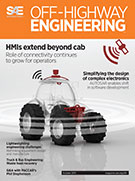Journal Article
Cybersecurity Vulnerabilities for Off-Board Commercial Vehicle Diagnostics
2023-04-11
2023-01-0040
The lack of inherent security controls makes traditional Controller Area Network (CAN) buses vulnerable to Machine-In-The-Middle (MitM) cybersecurity attacks. Conventional vehicular MitM attacks involve tampering with the hardware to directly manipulate CAN bus traffic.







